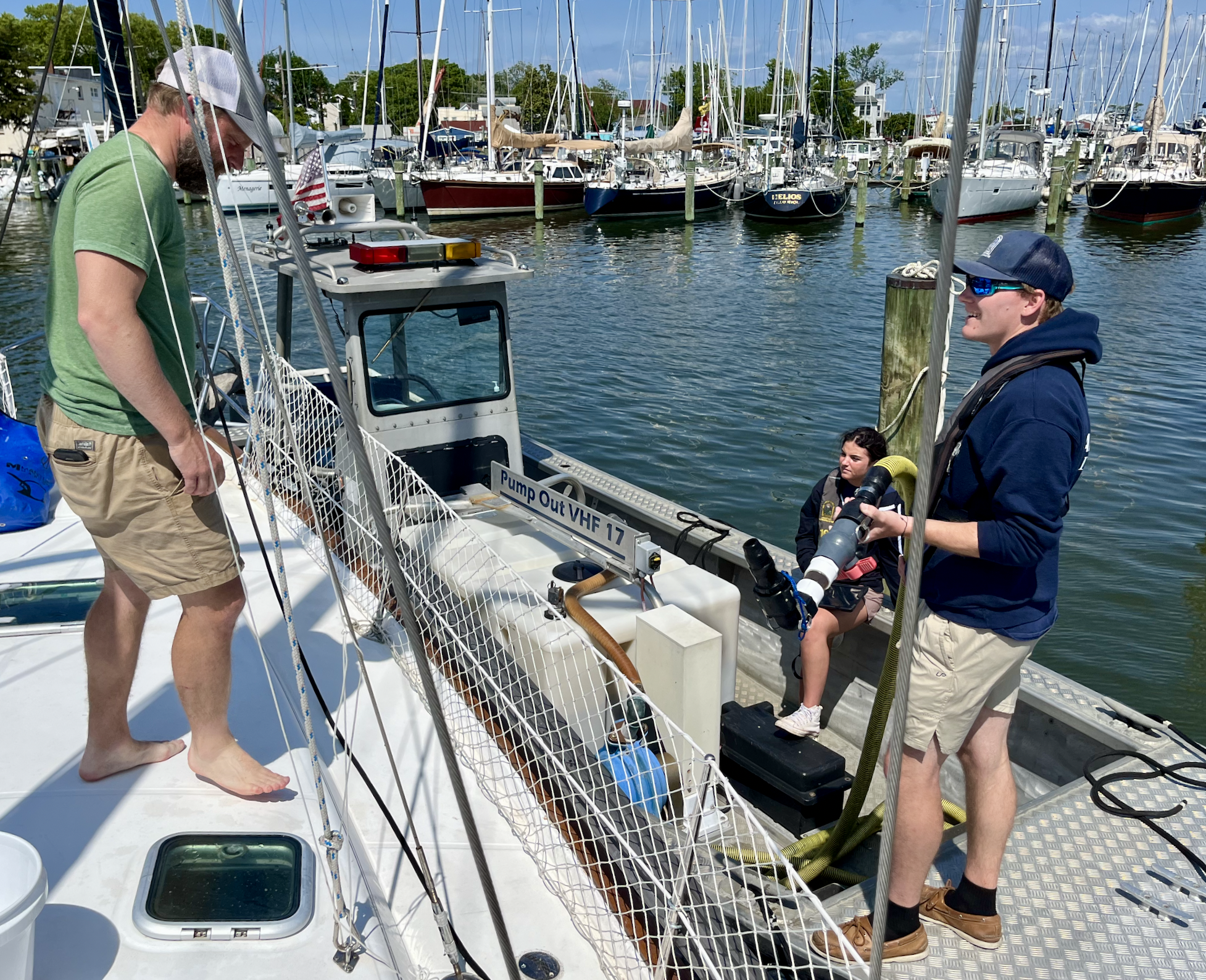Pump-Outs: Keeping Our Waters Clean
In our boating journey, we encountered a crucial aspect of responsible boating: pump-outs. As we sailed across the Chesapeake Bay from St. Michaels to Annapolis, we found ourselves navigating the waters of waste management, ensuring that our actions were in harmony with the environment we cherished.
For those living on land, the journey of waste disposal is often taken for granted. A simple flush of the toilet sends everything down the drain, disappearing from sight and mind. However, as boaters, we have a unique responsibility to consider the impact of our waste and take appropriate measures to protect the pristine waters we explore.
Here Chris is getting ready to receive the pump-out hose from the staff, where he will connect the nozzle to our black tank opening. Then the staff will turn on the pump… and out goes the sewage into their tank!
During our stay in Annapolis, we had the opportunity to experience different pump-out options firsthand. The first method involved utilizing a pump-out boat, a dedicated vessel equipped with specialized equipment for collecting and transferring waste from our holding tanks. We reached out to the pump-out boat via VHF radio, providing our location and requesting their services. The pump-out boat swiftly arrived, and with their expertise, our waste was efficiently pumped out, ensuring it would be properly handled and treated onshore.
On days when the pump-out boat wasn’t running, if we needed a pump-out, we’d have to leave the mooring ball and get pumped out at a nearby marina. We dubbed this route “The Poop Loop!”
Additionally, many marinas offer pump-out services right at the dock. Dockside pump-outs provide a convenient option for boaters to empty their holding tanks directly into the marina's waste management system. These pump-out stations are equipped with the necessary equipment and connections to safely remove and contain waste, preventing accidental discharge into the water.
When we had to swing over to the dock for a pump-out, the kids got more practice tossing dock lines and then helping us re-tie to the mooring ball when we were done.
Understanding the pump-out process is essential to ensure its effectiveness and avoid mishaps. While pumping out, monitoring the tank's pressure and avoiding overfilling is crucial, as excessive pressure or a full tank can lead to unwanted surprises—a potential "volcano of poo." To prevent messy incidents, we learned to carefully monitor the tank's capacity and maintain regular pump-outs to avoid reaching critical levels.
As responsible boaters, we recognize the importance of proper waste management to preserve the cleanliness and health of our beloved waterways. Pump-outs play a vital role in this effort, allowing us to responsibly dispose of our waste and prevent pollution. By understanding the pump-out process, remaining vigilant during pumping, and effectively communicating with pump-out operators, we can all contribute to maintaining the beauty and environmental integrity of the waters we navigate.
Next time you set sail, remember pump-outs' significance and their impact on keeping our waters clean. Embrace the responsibility and make pump-outs an integral part of your boating routine, ensuring a sustainable and enjoyable experience for all.



